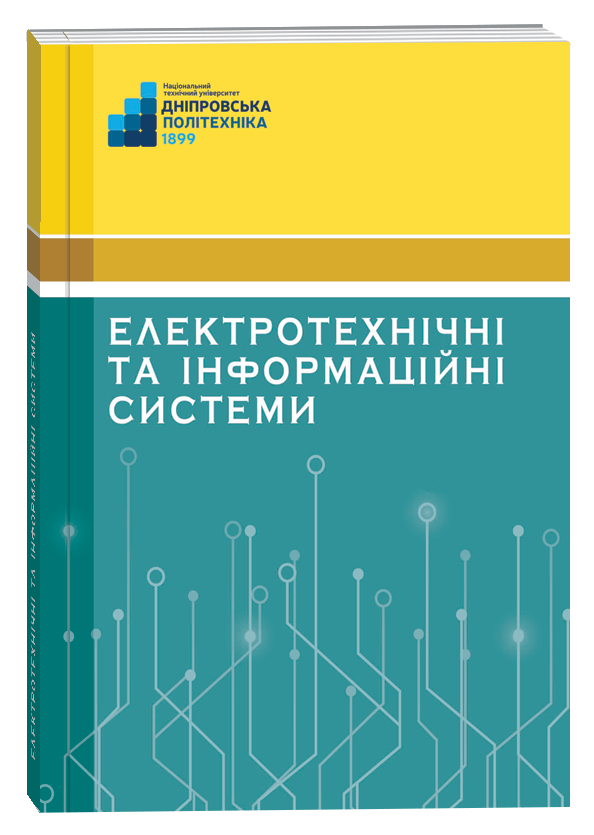DEVELOPMENT OF A COMBINED FILTER WITH END OF SERVICE LIFE INDICATOR FOR RESPIRATOR
DOI:
https://doi.org/10.32782/EIS/2024-106-17Keywords:
аdsorption, combined filter, capsule, aromatic substance, breakthrough timeAbstract
The purpose of article is to improve the design of combined filters for gas masks with the end of the service life indication. Methods. Determination of the breakthrough time was carried out by the standard method for evaluating the absorption capacity of the gas and combined filters according to DSTU EN 14387:2021. Ammonia and hydrogen sulfide were used as test gases. The filters were tested in several stages of 10 minutes at a time, the total filter test time was added to the total value. Determination of gas penetration through the filter was carried out by a combined method using gas analyzers and the sense of smell of expert testers. The results. An analysis of literary sources was carried out regarding the requirements for the application of systems for warning filters users about the expiration of the breakthrough time. It was established that the most acceptable method is the indicators using. The design of the combined filter has been improved by placing a soluble sodium chloride capsule with an aromatic substance in the penultimate layer of activated carbon in the center of the air flow. It was determined that the breakthrough time of combined filters with sodium chloride capsule with an aromatic substance differs by up to 20% from the calculated one, which will save the health of the user due to early diagnosis of the end of the adsorption capacity of the filter. Graphs of the time dependence of the protective effect of the combined filters on the concentration of the harmful substance in the air, which were obtained theoretically and by approximation of the data according to the obtained experimental results, were constructed. Recommendations have been developed for filter users to reduce the risks of poisoning by harmful substances and increase the effectiveness of the personal respiratory protection equipment using. The novelty consists in determining the adsorption resource of the combined filter through the destruction of the structure of the chloride-sodium shell of the capsule, which contains aromatic carbohydrates. The value lies in determining the breakthrough time of the combined filters due to the appearance of a sharp safe smell in the under-mask space due to the previous destruction of the chloride-sodium shell of the capsule, which is located in the filter structure.
References
Протигазовий фільтр : пат. 28733 Україна : А62В 23/00. № u 2007 07199 ; заявл. 26.06.2007 ; опубл. 25.12.2007, Бюл. № 21. 3 с.
NIOSH [1996]. NIOSH Guide to the Selection and Use of Particulate Respirators. Cincinnati, OH: U.S. Department of Health and Human Services, Public Health Service, Centers for Disease Control, National Institute for Occupational Safety and Health, DHHS (NIOSH) Publication No. 96-101. URL: https://www.cdc.gov/niosh/docs/96-101/default.html (дата звернення: 29.08.2024).
Аналіз ефективності існуючих способів визначення часу захисної дії протигазових фільтрів. Науковий вісник ДонНТУ / Д.І. Радчук та ін. 2023. № 2 (11). С. 128–137. URL: https://doi.org/10.31474/2415-7902-2023-2-11-128-137 (дата звернення: 29.08.2024).
Wang Y., Wang B. & Wang, R. Current Status of Detection Technologies for Indoor Hazardous Air Pollutants and Particulate Matter. Aerosol Air Qual. 2023. Res. 23, 230193. URL: https://doi.org/10.4209/aaqr.230193 (date of access 29.08.2024).
Rakyoung J., Kim Sh.H., Kwangjun K., Kihyun K., Myungkyu P., Ireh S. et al. Advanced cartridge design for a gas respiratory protection system using experiments, CFD simulation and virtual reality. Journal of Cleaner Production. 2023. Vol. 426. URL: https://doi.org/10.1016/j.jclepro.2023.139101 (date of access: 29.08.2024).
Moon S.M., Lee S., Min H., Park S., Yoon S., Choi, J. H. et al. Design and Integration of a Gas Sensor Module that Indicates the End of Service Life of a Gas Mask Canister. Adv. Mater. Technol. 2022. No 7, 2100711. URL: https://doi.org/10.1002/admt.202100711 (date of access: 29.08.2024).
Janvier, F. (2017). Effect of Mixtures Optimization of Parameters Used in Predictive Models for Respirator Cartridge Service Life for Toxic Organic Vapors. Extended abstract of Doctor’s thesis. Montreal (Canada): Université de Montréal. P. 37.
Konda A., Prakash A., Moss G.A., Schmoldt M., Grant G.D. & Guha, S. Aerosol filtration efficiency of common fabrics used in respiratory cloth masks. ACS Nano. 2020. Vol. 14. P. 6339-6347. URL: https://doi.org/10.1021/acsnano.0c03252 (date of access: 29.08.2024).
Zhuang Z., Bradtmiller B., & Shaffer R.E. New respirator fit test panels representing the current U.S. civilian work force. Journal of Occupational and Environmental Hygiene. 2007. Vol 4. P. 647–659. URL: https://doi.org/10.1080/15459620701497538 (date of access: 29.08.2024).
Groce D., Guffey S., & Viscusi D.J. Three-dimensional facial parameters and principal component scores: Association with respirator fit. Journal of the. International Society for Respiratory Protection. 2010. № 27(1), Р. 1–15.
Cai M., Li H., Shen S., Wang Yu & Yang, Q. Customized design and 3D printing of face seal for an N95 Filtering Facepiece Respirator. Journal of Occupational and Environmental Hygiene. 2017. No 15(3). P. 226–234. DOI: 10.1080/15459624.2017.1411598 (date of access: 29.08.2024).
Verma S., Dhanak M., & Frankenfield J. Visualizing the effectiveness of face masks in obstructing respiratory jets. Phys. Fluids. 2020. Vol. 32, 061708. URL: http://dx.doi.org/10.1063/5.0016018 (date of access: 29.08.2024).
Zangmeister C. D., Radney J.G., Vicenzi E.P. & Weaver J.L. Filtration efficiencies of nanoscale aerosol by cloth mask materials used to slow the spread of SARS CoV-2. ACS Nano. 2020. Vol. 14. P. 9188-9200. URL: https://doi.org/10.1021/acsnano.0c05025 (date of access: 29.08.2024).
Zhao M., Liao L., Xiao W., Yu X., Wang H., Wang Q. et al. Household materials selection for homemade cloth face coverings and their filtration efficiency enhancement with triboelectric charging. Nano Lett. 2020. Vol. 20. P. 5544-5552. URL: http://dx.doi.org/10.1021/acs.nanolett.0c02211 (date of access: 29.08.2024).
Zhang H., Zhang J., Hu Z., Quan L., Shi L., Chen J. et al. Waist-wearable wireless respiration sensor based on triboelectric effect. Nano Energy. 2019. Vol. 59. P. 75-83. URL: http://dx.doi.org/10.1016/j.nanoen.2019.01.063 (date of access: 29.08.2024).
Jennifer A. M., Gutierrez A., Galang M. D., Seva R. R., Lu M. C. & Ty, D.R.S. Designing an improved respirator for automotive painters. International Journal of Industrial Ergonomics. 2014. No 44(1). P. 131-139. URL: http://dx.doi.org/10.1016/j.ergon.2013.11.004 (date of access: 29.08.2024).
Radchuk D., Cheberiachko Yu., Naumov M., & Cheberiachko S. Research of influence of the gas filter design parameters on the protective term of respirators. Social Development and Security. 2024. Vol. 14(3). P. 180-194. URL: https://www.paperssds.eu/index.php/JSPSDS/article/view/689 (date of access: 29.08.2024).
Si F., Lian P., Yang D., Han G., Hao S. & Ye P. 3D Numerical Simulation of Aerodynamic Characteristics of a Gas Filter. Journal of Applied Mathematics and Physics. 2019. Vol. 7. P. 1920–1928. DOI: 10.4236/jamp.2019.78132 (date of access: 29.08.2024).
Jeon R., Kim S.H., Ko K., Kwon K., Park M., Seo I. et al. Advanced cartridge design for a gas respiratory protection system using experiments, CFD simulation and virtual reality. Journal of Cleaner Production. 2023. Vol. 426, 139101. URL: https://doi.org/10.1016/j.jclepro.2023.139101 (date of access: 29.08.2024).
Barnard J.E., Scott S., Tennison S., Smith M.W., Harral M.W., Burrows A.D. et al. Design and optimisation of a multifunctional monolithic filter for fire escape masks. Chemical Engineering Journal. 2022. Vol. 430(2), 132775. URL: https://doi.org/10.1016/j.cej.2021.132775 (date of access: 29.08.2024).
Bessac B.F, & Jordt S.E. Sensory detection and responses to toxic gases: mechanisms, health effects, and countermeasures. Proc Am Thorac Soc. 2010. Vol. 7(4). P. 269-277. DOI: 10.1513/pats.201001-004SM (date of access: 29.08.2024).
Aqueveque P., Cortés M., Gómez B., Osorio R., Pastene F., Radrigan L. et al. Embedded Electronic Sensor for Monitoring of Breathing Activity, Fitting and Filter Clogging in Reusable Industrial Respirators. Biosensors. 2022. Vol. 12, 991. DOI: 10.3390/bios12110991 (date of access: 29.08.2024).
Checky M., Frankel K., Goddard D., Johnson E., Thomas J., Zelinsky M. et al. Evaluation of a Passive Optical Based End of Service Life Indicator (ESLI) for Organic Vapor Respirator Cartridges. Journal of Occupational and Environmental Hygiene. 2015. Vol. 13. P. 1-30. DOI: 10.1080/15459624.2015.1091956 (date of access: 29.08.2024).





